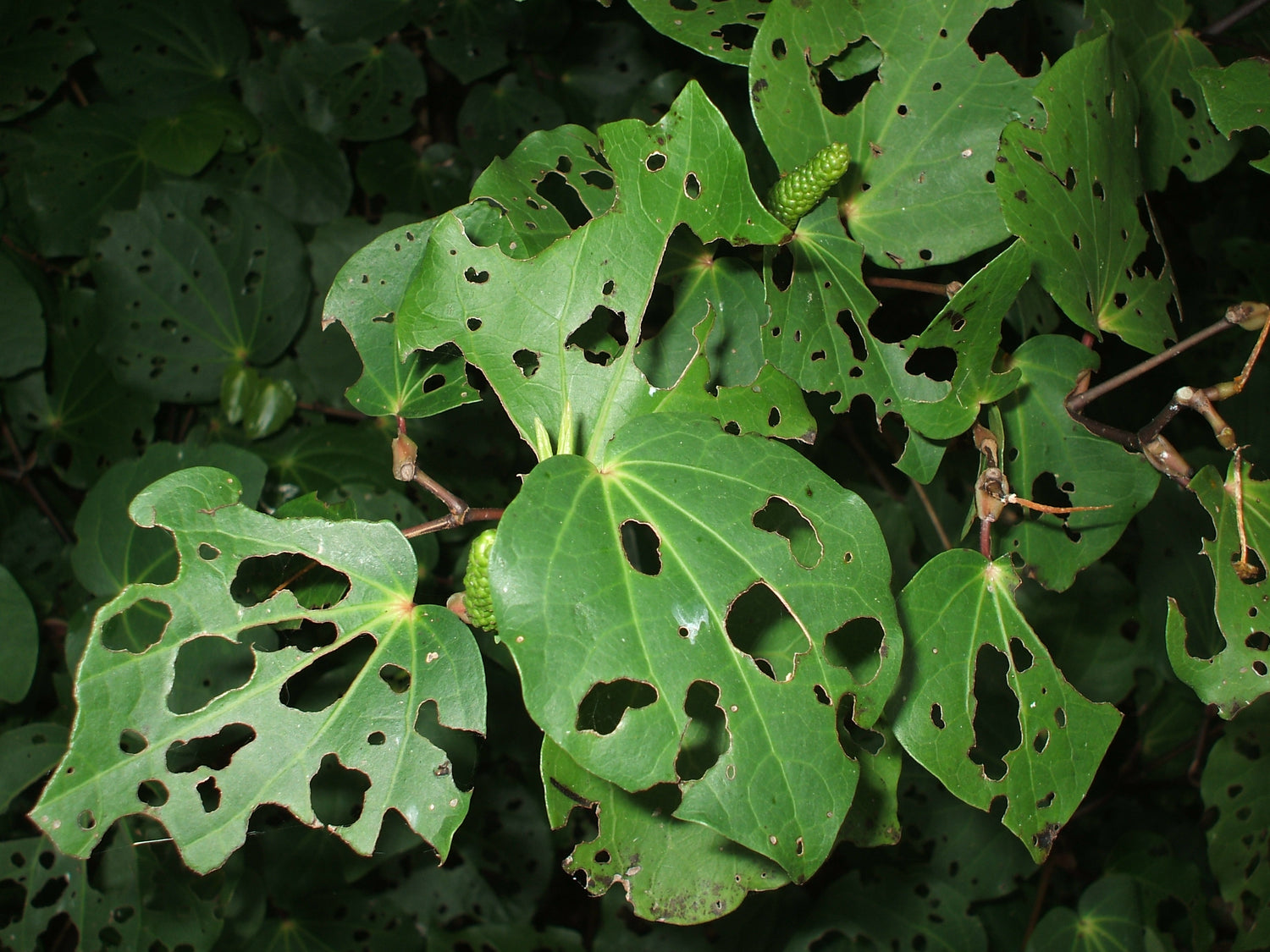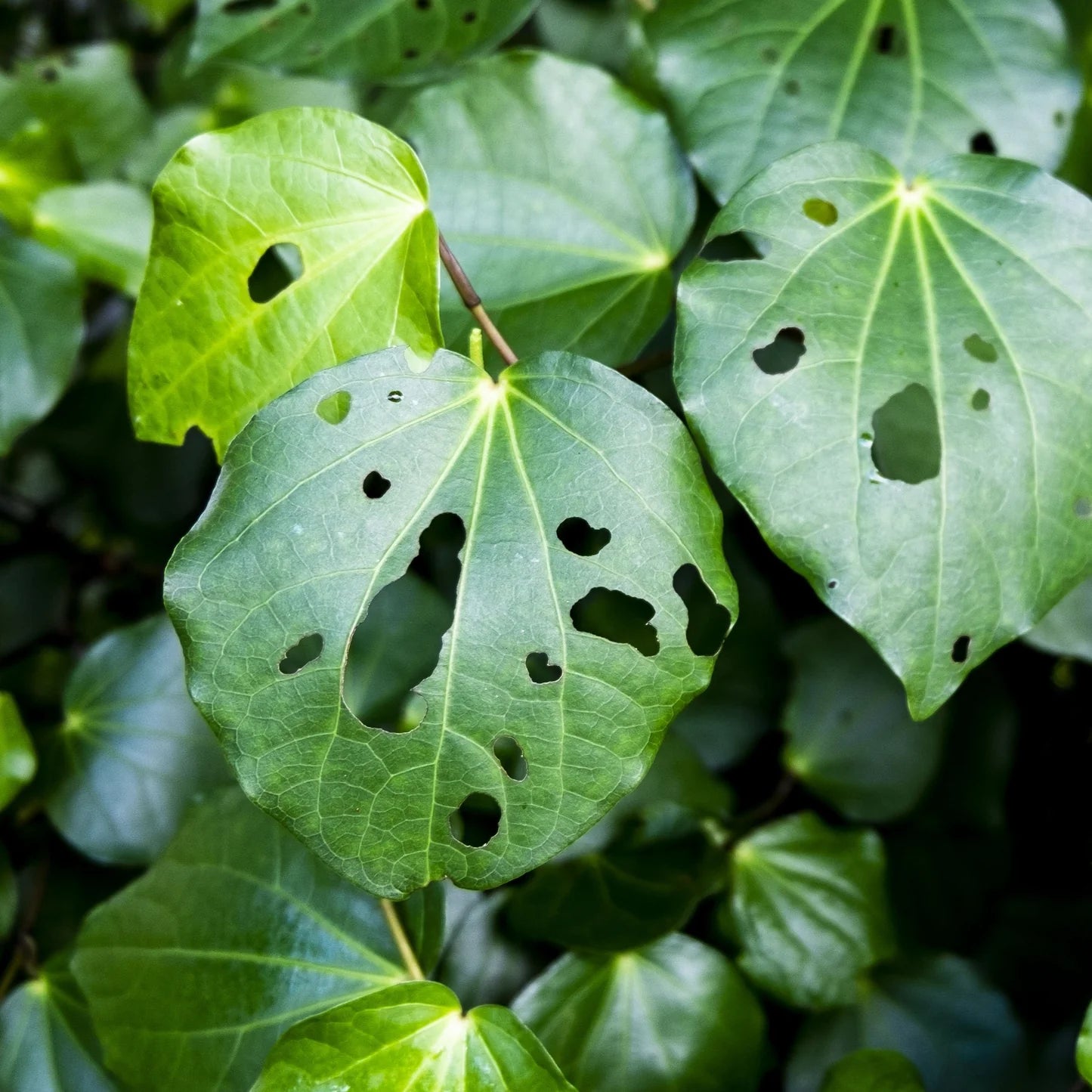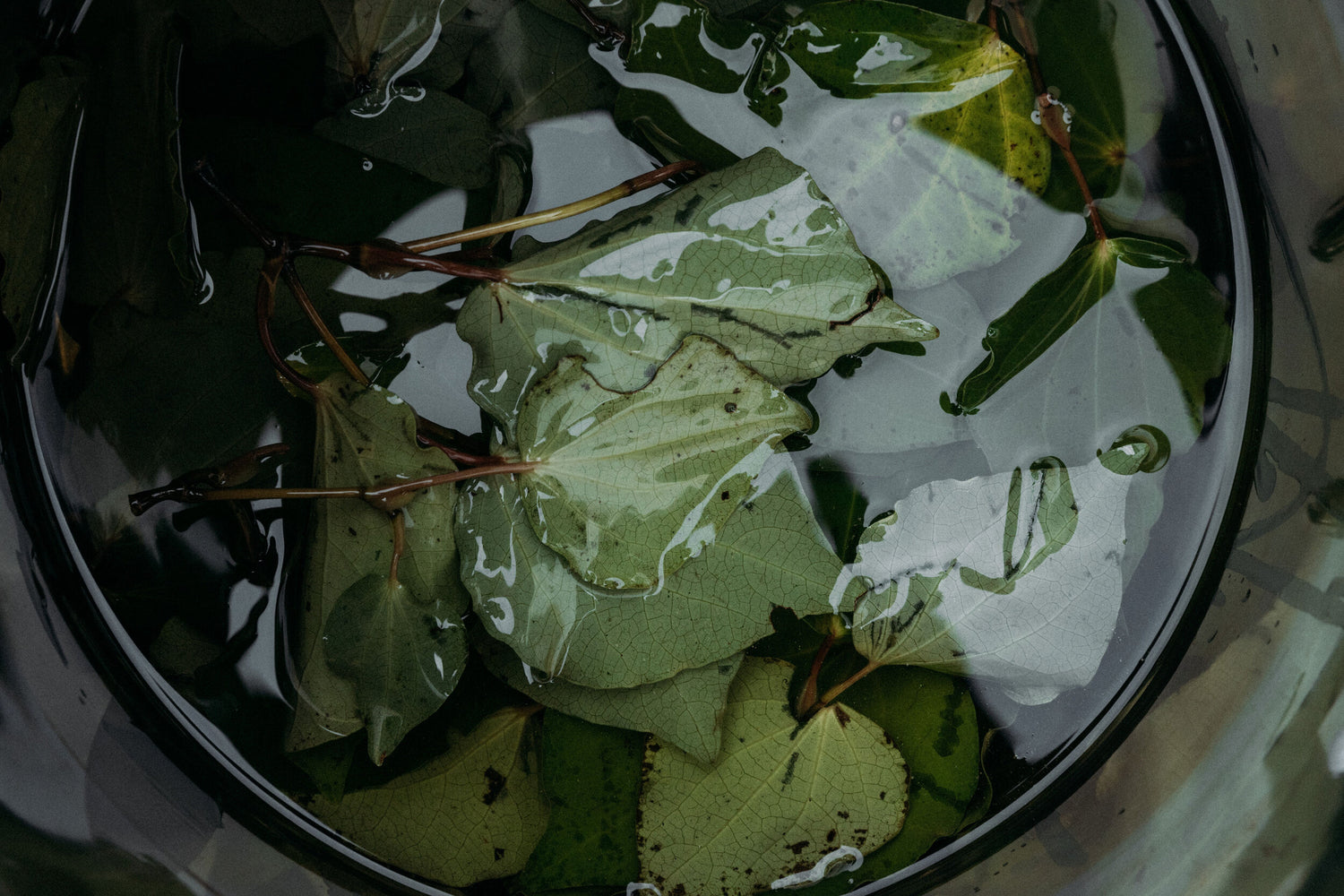
What are the health benefits of kawakawa and what is it most commonly used for?
Kawakawa has been used in traditional rongoā māori for centuries.
Kawakawa leaves contain a component called myristicin which helps trigger the release of nitric oxcide from cells. The release of nitric oxcide is the bodys’ anti-inflammatory response which means kawakawa allows aids the body in responding to inflammation.
What this means is that the plant is generally soothing and helps with reduction of blemishes, rashes and skin conditions such as eczema or psoriasis. The anti-inflammatory response can be so strong that it actually produces a numbing affect which is why the leaves can be chewed to relieve toothache.

Where is the kawakawa plant found in Aotearoa?
The habitat of the kawakawa plant is the coastal and lowland forests of the Te Ika-a-Māui (North Island) and the northern half of the Te Waipounamu (South Island).
This is because it prefers a moist rich & free-draining soil in a semi-shade to shade position. It will tolerate an open windy situation but is frost tender. Kawakawa will often be found growing beneath the canopy of larger plantings such as pine trees, as the kawakawa plant does not require much light to flourish.
Kawakawa (macropiper excelsum) is a herbaceous shrub with knobbly joints and branching stems native to Aotearoa. It has large heart shaped leaves that are a dark green, and sometimes slightly glossy.

What were Kawakawa leaves traditionally used for?
Kawakawa leaves were traditionally used to brew herbal remedies or concoctions. A dissolution of leaves in hot water would bring out the flavours, aromas and essential natural minerals.
Traditionally the tea was drunk to soothe the digestive system. The leaves were also turned in a poultice and applied topically to treat skin abrasions and ailments.
There are also stories of people chewing on the leaves to cure toothaches. It is an incredibly medicinal and healing plant of the Aotearoa bush.
